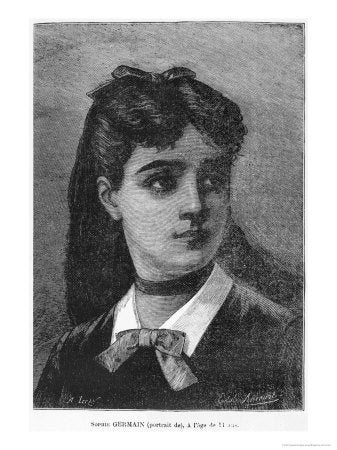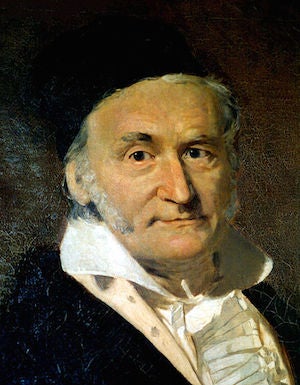This article was published in Scientific American’s former blog network and reflects the views of the author, not necessarily those of Scientific American

A portrait of Sophie Germain by Auguste Eugene Leray.
Sophie German (1776-1831), who was not allowed to attend university, was the first woman to make significant original contributions to mathematical research. Today, her story is both inspiring and heartbreaking. What might this brilliant, creative mind have done if barriers had not been thrown in her way at every step? How many others like her do we just not know about because those barriers kept them out?
While Germain could not study mathematics formally, she did correspond with some of the most prominent mathematicians of the day, including Carl Friedrich Gauss. She wrote using the name of one Monsieur LeBlanc, a former student at the Ecole Polytechnique. Gauss was impressed by Germain's ingenuity. The portion of their correspondence we read in math history class this semester touched me deeply. It addresses the systemic injustices Germain faced, but I was also struck by the way they both write of the joy and passion they had for their work. The excerpts below are taken from Sophie Germain: An Essay in the History of the Theory of Elasticity by L.L. Bucciarelli and N. Dworsky via Mathematical Expeditions by Reinhard Laubenbacher and David Pengelley (emphasis mine).
On supporting science journalism
If you're enjoying this article, consider supporting our award-winning journalism by subscribing. By purchasing a subscription you are helping to ensure the future of impactful stories about the discoveries and ideas shaping our world today.

Upon learning that Germain was in fact a woman, Gauss wrote to her:
"But how can I describe my astonishment and admiration on seeing my esteemed correspondent Monsieur LeBlanc metamorphosed into this celebrated person, yielding a copy so brilliant it is hard to believe? The taste for the abstract sciences in general and, above all, for the mysteries of numbers, is very rare: this is not surprising, since the charms of this sublime science in all their beauty reveal themselves only to those who have the courage to fathom them. But when a woman, because of her sex, our customs and prejudices, encounters infinitely more obstacles than men, in familiarizing herself with their knotty problems, yet overcomes these fetters and penetrates that which is most hidden, she doubtless has the most noble courage, extraordinary talent, and superior genius. Nothing could prove to me in a more flattering and less equivocal way that the attractions of that science, which have added so much joy to my life, are not chimerical, than the favor with which you have honored it.
"The scientific notes with which your letters are so richly filled have given me a thousand pleasures. I have studied them with attention and I admire the ease with which you penetrate all branches of arithmetic, and the wisdom with which you generalize and perfect."
In a letter to Gauss about her work on Fermat's Last Theorem, Germain wrote:
"Although I have worked for some time on the theory of vibrating surfaces...I have never ceased thinking about the theory of numbers. I will give you a sense of my absorption with this area of research by admitting to you that even without any hope of success, I still prefer it to other work which might interest me while I think about it, and is sure to yield results.
"Long before our Academy proposed a prize for a proof of the impossibility of the Fermat equation, this type of challenge, which was brought to modern theories by a geometer who was deprived of the resources we possess today, tormented me often."
Last week, I was wondering whether we could start seeing mathematics as a way to enrich our lives, not just as a way to make a living or a source of some useful engineering formulas. In these letters, I feel like Gauss and Germain capture that spirit. Gauss, of course, did make a living as a mathematician; Germain could not. But both wrote not of the utility of the subject but of the passion they had for it.
Although her plan to prove Fermat's Last Theorem was ultimately unsuccessful, Germain made more progress on it than she is usually given credit for. The full scope of her work on the problem has only recently been understood. For more information, I recommend two newsarticles by Julie Rehmeyer and a research article by Laubenbacher and Pengelley.